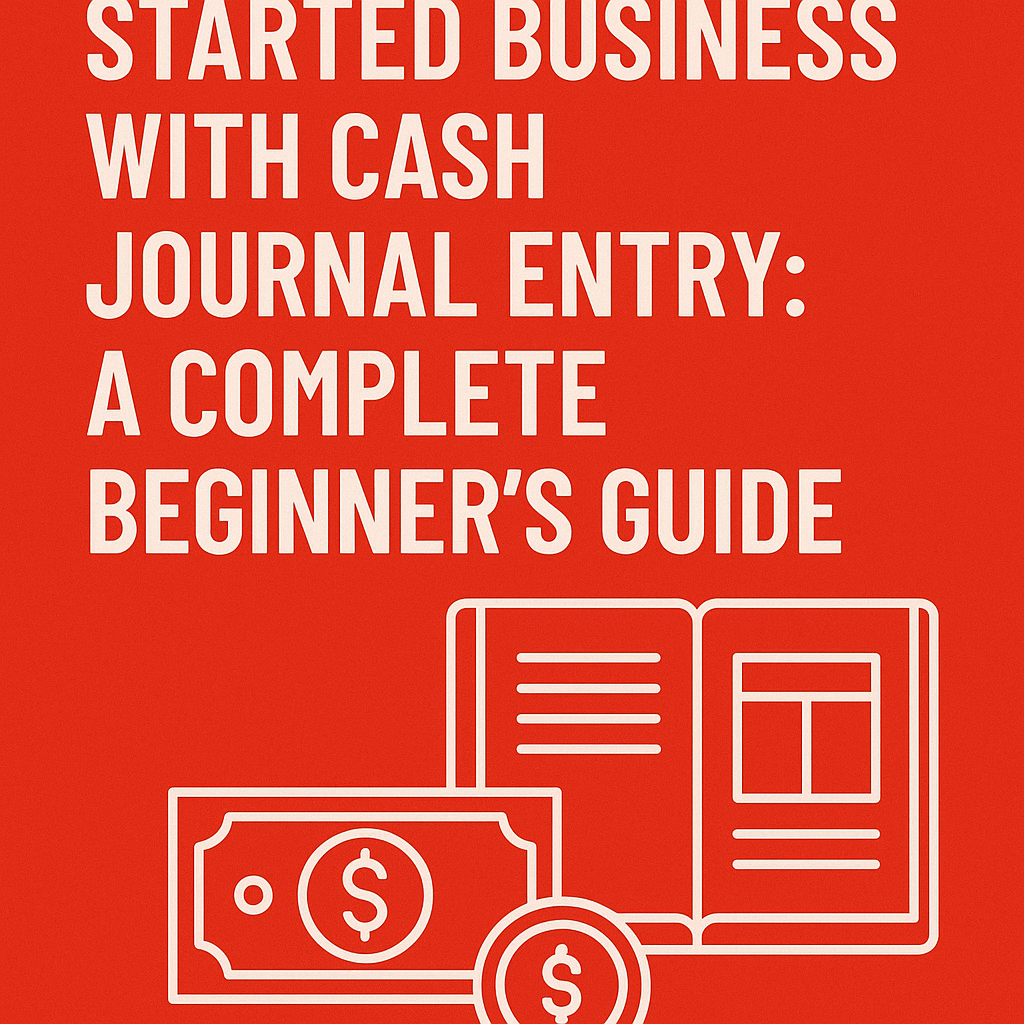Imagine this: You’re finally starting your dream business. You’ve saved money, you’re excited, and you’re ready to dive in. But when it comes to bookkeeping, you hit a wall. What’s the first thing you record? The answer: your “started business with cash” journal entry.
This simple entry forms the foundation of your accounting. It tells your financial story from day one. Whether you’re a solopreneur or a startup founder, understanding how to correctly record this transaction will keep your books clean, professional, and audit-ready. So did you Started Business With Cash Journal Entry.
In this article, we’ll break down:
- What a started business with cash journal entry is
- Why it’s important
- How to record it (with real-life examples)
- Common mistakes beginners make
- Tips to manage your business cash flow from the start
🧾 What Is a Journal Entry When Starting a Business?

In accounting, a journal entry is a formal record of a business transaction. When you start a business and inject cash, it’s called owner’s capital. This is the first transaction in your business, representing the money you’ve personally invested to get things rolling.
📘 Definition: A “Started business with cash journal entry” records the owner’s capital contribution in the form of cash at the start of the business.
📊 Journal Entry Format: Started Business With Cash Journal Entry
Here’s what the basic journal entry looks like:
| Date | Particulars | Debit (₹) | Credit (₹) |
|---|---|---|---|
| 01/07/2025 | Cash A/C (Dr) | 100,000 | |
| To Capital A/C | 100,000 | ||
| (Being business started with cash) |
Explanation:
- Cash A/C is debited because the business receives cash.
- Capital A/C is credited because it’s the owner’s equity or contribution to the business.
💡 Tip: In accounting, “debit what comes in” and “credit the giver.” Since cash is coming into the business, it’s debited.
🔍 Why This Entry Is So Important
Recording the Started Business With Cash Journal Entryaccurately is crucial for several reasons:
- ✅ Establishes Owner’s Equity: It shows how much money the owner has invested.
- 🧮 Starts the Ledger: It becomes the first record in your books.
- 📑 Helps with Compliance: Essential for tax filing and audits.
- 📈 Tracks Growth: Sets a clear financial baseline to measure progress.
📌 Real-Life Example: Starting a Freelance Business
Let’s say Sarah wants to start a freelance graphic design business. She deposits ₹50,000 from her savings into a new business bank account. The journal entry would be:
| Date | Particulars | Debit (₹) | Credit (₹) |
|---|---|---|---|
| 01/07/2025 | Cash A/C (Dr) | 50,000 | |
| To Capital A/C | 50,000 | ||
| (Sarah started her business with cash) |
🧠 Key Concepts to Understand
1. Cash Account
This is an asset account. When the business receives cash, it’s an increase in assets, hence it gets debited.
2. Capital Account
This is part of owner’s equity. The capital is the amount the owner invests in the business, so it is credited.
3. Dual Entry System
Every transaction affects two accounts: one debit and one credit. That’s why your “started business with cash journal entry” has both.
🔁 Alternative Scenarios
What if you started your business with cash and equipment? The entry would look like this:
| Date | Particulars | Debit (₹) | Credit (₹) |
|---|---|---|---|
| 01/07/2025 | Cash A/C (Dr) | 30,000 | |
| Equipment A/C (Dr) | 20,000 | ||
| To Capital A/C | 50,000 | ||
| (Business started with cash and equipment) |
❌ Common Mistakes to Avoid
- Reversing Debit and Credit
Always remember: Cash comes in → Debit, Capital contributed → Credit. - Mixing Personal and Business Funds
Open a separate bank account for your business to maintain clean records. - Not Recording the Entry at All
Some beginners delay bookkeeping until later. Don’t! Start right away. - Using Wrong Dates
The journal entry should reflect the actual date of the transaction.
✅ Best Practices for Beginners
- 📘 Use Accounting Software like QuickBooks, Zoho Books, or Wave to make your first entries easier.
- 🔁 Maintain Consistency with date formats, descriptions, and amounts.
- 🧾 Keep Supporting Documents like bank deposit slips or screenshots of transfers.
- 🧠 Understand Double Entry Rules—you’ll use them every day in business.
📷 Visual Summary
| Aspect | Debit | Credit |
|---|---|---|
| Starting with Cash | Cash A/C | Capital A/C |
| Starting with Cash + Equipment | Cash A/C + Equipment A/C | Capital A/C |
| Cash Withdrawals (later) | Drawings A/C | Cash A/C |
🚀 Conclusion: Start Right to Grow Right
Starting your business is exciting—but don’t ignore your books. Recording your started business with cash journal entry is not just about numbers; it’s about discipline, transparency, and growth.
The sooner you understand this foundational step, the smoother your financial journey will be. Whether you’re bootstrapping or preparing to scale, good accounting starts on day one—with a journal entry.
📣 Call-to-Action
Ready to take control of your business finances?
✅ Download our free startup journal entry template
✅ Subscribe to our newsletter for more beginner-friendly finance tips
✅ Share your first journal entry experience in the comments below!
Have questions? Drop them below or message us directly—let’s grow your business, one entry at a time. Find more here.




Pingback: How to Earn Money with Trading: A Complete Beginner’s Guide to Smart Profits | Finance & Investment topic in oklee